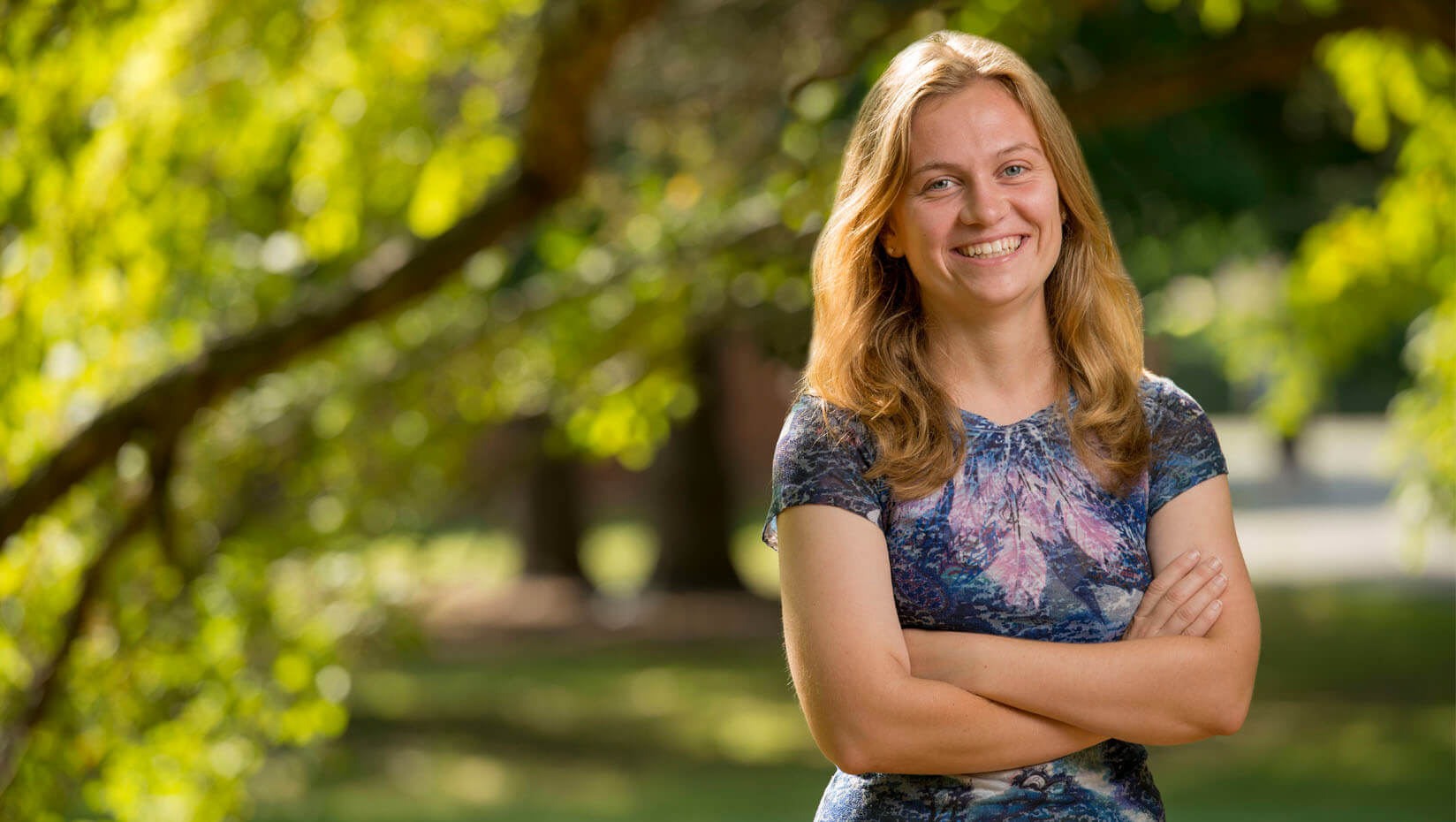
Savannah Haines: Passion for the forest and its health
Savannah Haines, a junior from Westport, Massachusetts, majoring in forestry with a minor in environmental horticulture, was one of three students nationwide to be awarded a Robert Felix Memorial Scholarship. The scholarship, which supports undergraduates studying arboriculture and urban forestry, is offered through the TREE Fund, a nonprofit organization committed to supporting the science of cultivating and managing trees in a landscape.
Haines is an undergraduate research assistant for the School of Forest Resources collaborating with professor William Livingston and graduate student Kara Costanza on the white pine research team. Haines has contributed to studies of fungal pathogens infesting North American white pine. Caliciopsis pinea is a native fungus that can affect tree growth and lower its potential lumber quality, yield and value.
The fungus promotes excessive resin production that stresses the tree and leads to defects or downgrades at the mill. In addition the pathogen can result in thinner white pine crowns, which limits the amount of photosynthesis the tree can complete. Over time these negative effects either lead to or contribute to decline, and potentially, the death of the affected tree, Haines says.
As a member of the research team, Haines has helped process the white pine samples that were collected from areas heavily affected by the fungus. The goal is to develop a 3-D model of infestation size and location on a given tree.
The team hopes that the project will lead to better management guidelines that will help control and reduce fungal infestations.
For this work, as well as her academic excellence, she was also a recipient of the 2016 Edith Patch Award.
“I am very honored and thankful to be recognized for my contributions to this project. In addition, having the opportunity to present my research contributions and educate people on the research we have been working on is very exciting,” said Haines.
Haines enjoys studying forest pathology because she finds it both challenging and rewarding.
“I get to apply my knowledge and learn new things while having a way to help the environment on a larger scale. When the trees suffer, the habitats they make and the wildlife that inhabit them also suffer.”
Haines is expecting to graduate in May of 2018 and will be continuing her work with the white pine research team this year.
Outside of the forest and classroom, Haines enjoys biking, exploring Orono’s Farmers Market and searching for curiosities at Bangor’s Rock and Art Shop with her friends.
Why UMaine?
I chose the University of Maine for its strong forestry program. I visited many schools in New England, but felt most at home here.
How would you define the opportunities for student success at UMaine? Is there any particular initiative, program, or set of resources that helped you succeed?
I believe that there are ample opportunities for a student to succeed at UMaine. For me personally I attribute my success to the School of Forest Resources’ staff and students. The School of Forest Resources is filled with professors and staff that always push you to do your best. It has a very welcoming environment which makes communication between graduate students, undergraduate students and faculty very easy.
How has UMaine shaped your academic interests? As an undergraduate student how does it feel to have the opportunity and ability to participate in active research?
UMaine has greatly shaped my academic interests. Prior to my education at UMaine, I attended Bristol County Agricultural High School where I majored in arboriculture. Switching from arboriculture to forestry forced me to see the bigger picture. In arboriculture you are concerned with specific tree health in an urban setting. However, in forestry you are concerned with acres of tree health, habitat health and wildlife health.
It is very exciting to have the opportunity to participate in an active research project. I am grateful to get the hands on experience and be able to take what I have learned in the classroom and apply it to a real world situation.
Have you worked closely with a professor or mentor who made your UMaine experience better?
Yes, I have been lucky enough to have two mentors, my academic adviser, Dr. Livingston and my boss, [Ph.D. student] Kara Costanza. Working with Kara and Dr. Livingston has been the greatest opportunity of my undergraduate career. I am very grateful and appreciative of both of them for everything they have taught me. Having this job solidifies my intentions of pursuing forest pathology. I really do see myself working with fungus for the rest of my life.
What are your plans for your time following UMaine?
Following graduation I will attend graduate school to get my master’s and doctorate degrees in forest pathology. Ultimately I would like to become a forest pathologist. I enjoy doing research and I see this as a great way to help the environment on a larger scale.
What advice do you have for incoming students to help them get off to the best start academically?
My advice to incoming students is to develop a routine and stick to it. It can be very exciting being away from home and it is easy to let your responsibilities slip. Make sure you leave yourself enough time to eat, sleep, study and have fun. Too much fun or too much studying can be overwhelming and stressful later on.
